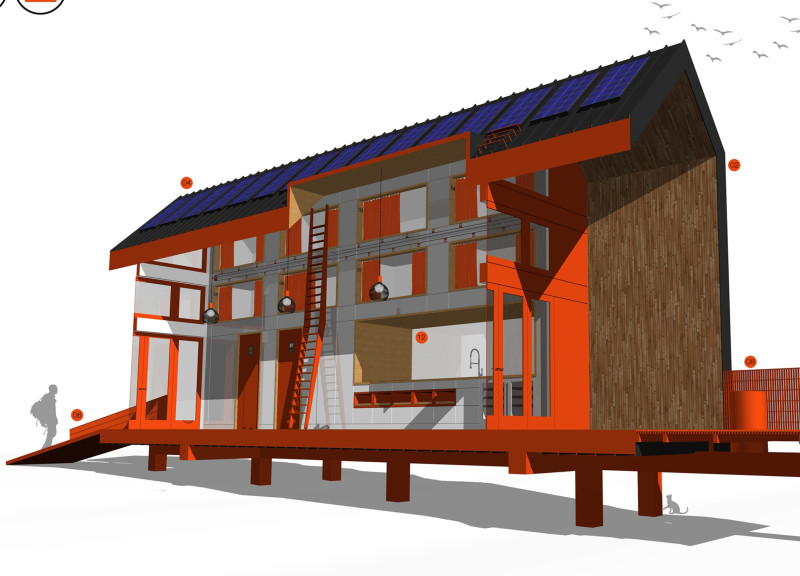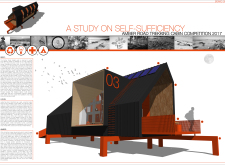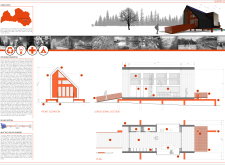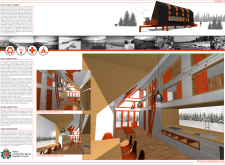5 key facts about this project
The primary function of the Amber Road Trekking Cabin is to provide a restful stop for hikers, encouraging them to immerse themselves in the serene natural landscapes of Latvia. The design integrates essential amenities while ensuring that users can enjoy a communal space that fosters interaction. This project emphasizes the significance of balance and harmony between human habitation and the environment, showcasing architecture that respects its surroundings.
One of the crucial details in the architecture of the cabin is its dual-pitched roof, which reflects the traditional gable forms commonly found in regional structures. This design choice not only resonates with local architectural heritage but also serves practical purposes, such as enhancing thermal performance and protecting against the elements. The cabin is elevated above ground level, facilitating natural water drainage and minimizing disruption to the landscape, embodying a strong ecological consideration.
Materiality plays a significant role in the design approach. The cabin employs a variety of materials, including multiplex wood and plank board, which provide warmth and aesthetic appeal. The incorporation of glass allows for ample natural light while offering expansive views of the surrounding wilderness. The use of durable metal in roofing and structural elements delivers strength and longevity, characterizing the cabin as a contemporary retreat that does not compromise on resilience.
Unique design approaches are evident throughout the cabin. The platform layout facilitates both private and communal spaces, including a living area that encourages social interaction among occupants, and sleeping quarters that balance privacy with shared experience. Modular furniture enhances this flexibility, allowing the space to adapt to various group sizes and activities. This adaptability makes the cabin functional, catering to diverse needs while fostering a sense of community.
The architectural design is not only concerned with aesthetics and functionality but also emphasizes sustainability. Solar panels installed on the roof represent a commitment to renewable energy solutions, promoting energy efficiency and self-sufficiency. The inclusion of rainwater harvesting systems and composting toilets reflects a conscientious approach to resource management, underscoring the project's goal of minimizing environmental impact.
The careful selection of materials, forms, and sustainable practices reveals a meticulous design philosophy. The Amber Road Trekking Cabin stands as a prominent example of how modern architecture can harmonize with the environment while addressing contemporary needs for comfort and convenience.
Ergo, to gain deeper insights into the architectural plans, sections, designs, and ideas embedded within this thoughtfully crafted project, it is encouraged to explore detailed presentations and visual representations. Such analyses of the Amber Road Trekking Cabin not only highlight its innovative features but also celebrate the harmonious dialogue between architecture and nature, inviting all to experience the journey along the Amber Road.


























